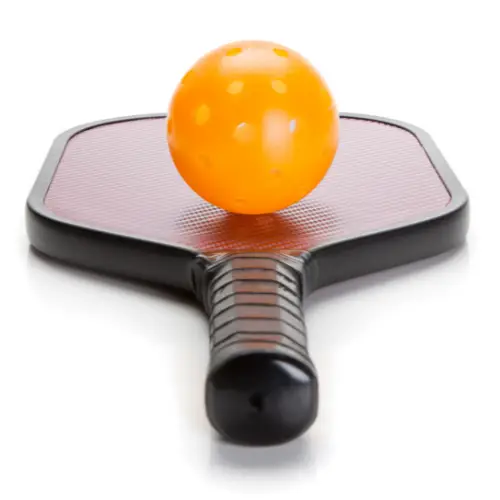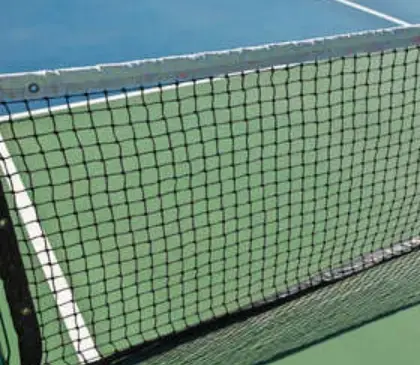Pickleball is a sport that has been gaining popularity in recent years, and it’s not hard to see why. It’s a fun, fast-paced game that combines elements of tennis, badminton, and table tennis. One of the most important pieces of equipment for pickleball is the ball, and there are two main types: indoor and outdoor.
In this article, we will take a closer look at the differences between indoor and outdoor pickleball balls and compare their performance, durability, and overall suitability for different types of play. Whether you’re a seasoned pickleball player or just starting out, this comparison will help you understand the pros and cons of each type of ball and make an informed decision about which one to use.
Characteristics Of Indoor Pickleball Balls
Compared to outdoor pickleball, indoor pickleball are often smaller, lighter, softer, and have bigger holes.
A ball used indoors typically weighs 0.8 ounces. You can play a slower-paced game with longer rallies since they are lightweight, easy to handle and come off the paddle.
Due to their adequate rebound on indoor surfaces like gym floors, indoor balls are also less noisy than their outdoor counterparts. The beautiful thing about indoor balls is that you can use them outside without a doubt! It’s true that some players prefer to play with indoor balls outside since they are simpler to control and allow for longer rallies.
Characteristics Of Outdoor Pickleball Balls
Many pickleball newbies mistakenly believe that the balls used for indoor and outdoor play are the same. Fortunately, you discovered this article (by chance or design) to inform you that not all pickleball balls are created equal.
Yes, there are indoor and outdoor pickleball balls available. Let’s first talk about outdoor balls, which make up the first category of balls.
Compared to indoor balls, outdoor balls are larger, heavier, and harsher.
Additionally, they have smoother plastic composition and fewer pores. Due to the combination of all these factors, this kind of ball comes off the paddle more forcefully and quickly. Shorter rallies and a faster tempo of play arise from it being harder to control the ball.
Outdoor pickleball balls also tend to be heavier and have smaller, more frequent holes. Each ball typically weighs 0.9 ounces and has 40 holes on it.
In case you were wondering, the reason why outdoor pickleball are heavier and have smaller holes is due to science. This is so that winds won’t have as much of an impact on the smaller holes and heavier balls. Additionally, you should anticipate that outside balls are noisier and hurt far more when struck than inside balls.
What Are The Similarities And Differences Of Indoor And Outdoor Pickleball Balls?
Similarities:
- Both indoor and outdoor pickleball balls are made of plastic and have a hollow design.
- Both types of balls have similar sizes and weights.
- Both types of balls are designed to bounce and fly similarly.
Differences:
- Indoor pickleball balls are typically made of a harder plastic material, which makes them more durable and longer-lasting. Outdoor pickleball balls are typically made of a softer plastic material, which makes them more responsive to outdoor conditions.
- Indoor pickleball balls are typically brighter in color and have a glossy finish, while outdoor pickleball balls are typically more subdued in color and have a matte finish.
- Indoor pickleball balls are typically used on indoor courts with smooth surfaces, while outdoor pickleball balls are typically used on outdoor courts with rougher surfaces.
- Indoor pickleball balls are typically used in tournaments and competitions, while outdoor pickleball balls are typically used for recreational play.
- Indoor pickleball balls are typically more expensive than outdoor pickleball balls.
What Are The Advantages Of Indoor And Outdoor Pickleball Balls?
Indoor Pickleball Balls:
- They are designed to be used on indoor courts, which are typically made of wood or other hard surfaces.
- Indoor balls are usually made of a harder material, such as plastic or composite, which allows them to bounce higher and travel faster.
- They are less affected by wind and weather, making them more consistent in their performance.
- Indoor balls are also less likely to become damaged or worn out quickly.
Outdoor Pickleball Balls:
- They are designed to be used on outdoor courts, which are typically made of asphalt or concrete.
- Outdoor balls are usually made of a softer material, such as rubber, which allows them to bounce lower and travel slower.
- They are more affected by wind and weather, which can make them less consistent in their performance.
- Outdoor balls are also more likely to become damaged or worn out quickly due to exposure to the elements.
What Are The Disadvantages Of Indoor And Outdoor Pickleball Balls?
Indoor Pickleball Balls:
- They tend to be softer and less durable than outdoor balls, which can make them more prone to breaking or cracking over time.
- They often have a slower bounce, which can make them less challenging to play with and less fun for advanced players.
- They can be more expensive than outdoor balls, which can make them less accessible to some players.
Outdoor Pickleball Balls:
- They tend to be harder and more durable than indoor balls, which can make them less comfortable to play with and more difficult to control.
- They often have a faster bounce, which can make them more challenging to play with and more fun for advanced players.
- They can be affected by wind and other weather conditions, which can make them less predictable and harder to play with.
- They can be affected by the surface or ground they are played on, which can make them less consistent and harder to control.
Do pickleball balls wear out and how long do balls last?
Pickleball balls deteriorate over time, just like any sporting ball. Even while pickleball balls are constructed of sturdy polymers, they do crack and wear out over time, especially if you play the game frequently.
Even though there are many pickleball ball manufacturers that are considerably more durable than others, it is difficult to predict how long these balls will endure. Although the brand of the balls matters a lot, you need also to take other aspects like the weather into account. An outside ball has a higher possibility of quickly cracking the colder it is.
The force with which you strike the ball is another aspect. Despite the fact that outdoor balls are believed to be more resilient than indoor balls, there is still a chance that you will need to replace them too soon, particularly if you smash the ball too hard and play on an outdoor court with a lot of roughness.
There are certain balls that can last you for a long time, and there are also other balls that won’t even last a whole game. Having plenty of extra pickleball balls will help you stay in the game at all times.
Conclusion
In conclusion, indoor and outdoor pickleball balls have distinct differences that make them suitable for specific playing environments. Indoor balls are typically softer and slower, making them ideal for indoor courts with lower ceilings and less wind. Outdoor balls, on the other hand, are harder and faster, making them perfect for outdoor courts with higher ceilings and windy conditions. Both types of balls are made to withstand the wear and tear of regular play, but outdoor balls tend to last longer due to their durability. Ultimately, the choice between indoor and outdoor pickleball balls depends on the playing environment and personal preference of the player.







